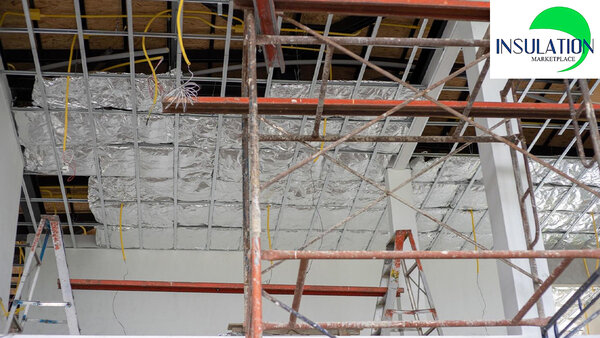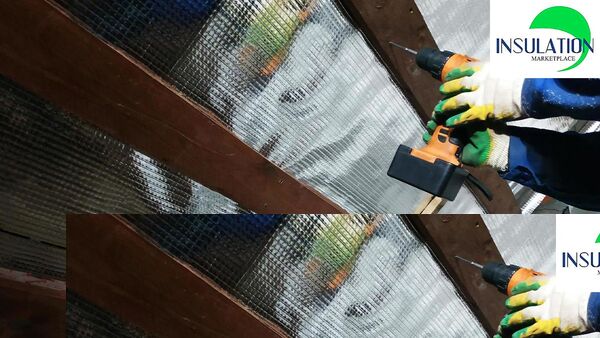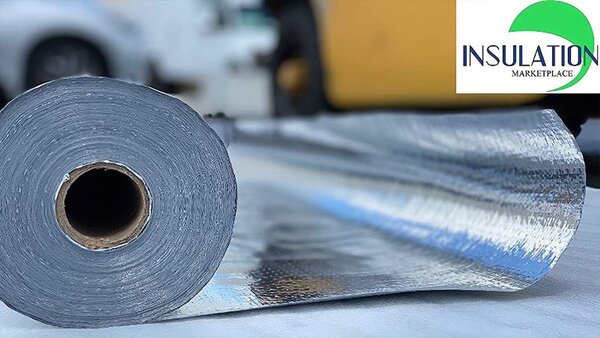How Does Radiant Barrier Work? The Science Behind
Radiant barriers are innovative solutions designed to enhance energy efficiency in homes. But how does radiant barrier work?
Using highly reflective materials, radiant barriers help bounce heat away from your living spaces, keeping things cooler in the hot months and cutting down on cooling costs. In this article, we'll dive into how these barriers work and why they’re so beneficial.

What is a Radiant Barrier?
A radiant barrier is a specialized material that significantly reduces radiant heat transfer. It works by reflecting heat away from its surface or emitting minimal heat from the side opposite the heat source.
Unlike conventional insulations that absorb heat, radiant barriers block radiant heat energy, making them highly effective in controlling temperature. They maintain consistent performance regardless of humidity levels, ensuring reliable energy efficiency in various climates.
Typically made from reflective materials like aluminum, radiant barriers can be installed in attics, walls, and roofs, providing a permanent solution for managing heat transfer in residential and commercial buildings.

How Does Radiant Barrier Work?
Now that we've covered what a radiant barrier is, how does radiant barrier work to keep your home cool?
Radiant barriers typically consist of a thin sheet or coating from a highly reflective material. This reflective layer is often applied to one or both sides of various substrates, including kraft paper, plastic films, cardboard, plywood sheathing, or air infiltration barrier materials.
By being highly reflective, these barriers effectively block radiant heat rather than absorbing it. This reflective capability helps reduce heat transfer into your home, particularly during hot weather.

The science behind radiant barriers is rooted in the principles of heat transfer. There are three main types of heat transfer: conductive, convective, and radiant.
- Conductive Heat Transfer: This occurs when heat is transferred through direct contact between materials. For instance, touching a hot stove transfers heat to your skin through conduction.
- Convective Heat Transfer: Convection involves the movement of air or fluids. For example, warm air rises and displaces cooler air in a cold room with a heater, creating a cycle of warm air throughout the space. Radiant barriers do not address convective heat but focus on controlling radiant heat.
- Radiant Heat Transfer: It happens through electromagnetic radiation. A good example is the warmth you feel from the sun. Despite no direct contact or moving air, you experience warmth as your skin absorbs radiant energy from the sun.
Benefits of Radiant Barriers
Radiant barriers are more than just a simple home improvement; they offer several advantages that can significantly enhance comfort and energy efficiency. Here's a closer look at the benefits they provide:
- Enhanced Heat Control: Radiant barriers effectively reflect radiant heat away from your home, much like a sunshade in a car. This mechanism helps maintain a cooler indoor environment, especially during hot summer, by preventing excessive heat from penetrating your living spaces.
- Improved Moisture Management: Radiant barriers can also help control moisture and humidity levels by reducing heat flow. They minimize condensation issues in attics, preventing mold and mildew growth - a common problem in homes with fluctuating temperatures.
- Energy and Cost Savings: A radiant barrier can significantly save cooling costs. By blocking heat transfer, these barriers reduce the workload on your air conditioning system, which can cut your energy bills by 5 to 10 percent and extend the life of your cooling equipment.
- Compatibility with Other Insulation: Radiant barriers complement existing insulation by reflecting heat away, thereby enhancing the overall efficiency of your insulation system. This synergy can lead to more consistent temperatures throughout your home.
- Long-Term Durability: Radiant barriers are durable and require minimal maintenance. Made from robust materials like aluminum, they are resistant to pests and can last for the lifetime of your home, making them a wise, long-term investment.

Tips to Install Radiant Barriers
To effectively understand how does radiant barrier work, it's essential to consider the installation process. Here are some helpful tips for installing radiant barriers:
- Start Early: Begin your installation in the morning when the attic is cooler, making the work more comfortable.
- Prepare Your Tools: Bring all necessary materials and tools into the attic beforehand to minimize trips back and forth.
- Stay Hydrated: Keep plenty of water on hand and drink regularly, especially during hot months, to stay refreshed.
- Ensure Good Lighting: If your attic lacks adequate lighting, bring a portable light source to improve visibility while you work.
- Set Up a Central Work Area: To streamline the installation process, establish a central location in the attic for your tools and materials.
- Be Mindful of Joists: Walk carefully on the attic floor joists; some may roll or shift underfoot.
- Take Your Time: If you're doing the job yourself, don't rush it. Spread the work over several cooler days for better results.

Ensure Reliability with Insulation Marketplace's Radiant Barriers
Understanding “how does radiant barrier work?” reveals their effectiveness in managing heat and improving energy efficiency. To ensure you benefit from high-quality radiant barriers, consider Insulation Marketplace. We offer a range of reflective insulation products, including SmartFOIL Radiant Barriers, designed to exceed performance standards and provide easy installation.
Our products are certified for quality and come with a 10-year warranty and a 60-day satisfaction guarantee. Experience advanced technology and significant energy savings with our reliable solutions. For affordable and effective insulation, visit Insulation Marketplace today and start enhancing your home's comfort and efficiency!
FAQs
To help you understand how does radiant barrier work and their impact, here are some frequently asked questions:
1. How much energy cost can radiant barriers save?
Radiant barriers can reduce annual cooling costs by about 8-12%, especially in hotter regions like the Southeast. The savings depend on how much heat the roof and attic contribute to your home's cooling load.
2. What are kinds of available radiant barrier materials?
Common radiant barrier materials include single-sided foil with kraft paper or polypropylene, double-sided foil with reinforcement, foil-faced insulation, and multilayered foil systems. Each type varies in construction and effectiveness.
3. What factors affect the cost of radiant barrier?
The cost of radiant barriers varies based on installation, quantity purchased, manufacturing methods, type of reinforcement, and market conditions. Larger quantities and simpler manufacturing can reduce the per-square-foot cost.




